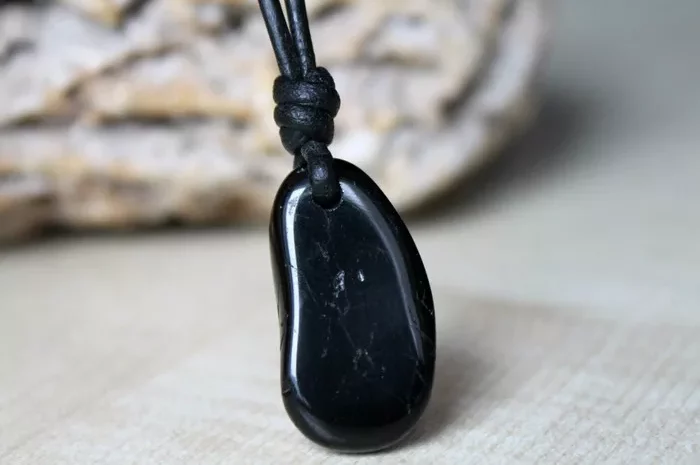The Czech meteorite, also known as Moldavite, holds a fascinating historical and scientific significance. Its origin dates back approximately 15 million years ago when a massive meteorite collided with the Earth’s surface. This collision generated immense heat and pressure, fusing the impacting meteorite with surrounding rocks into a glassy, wave-like material. Discovered in 1787 along the Moldavite River in the Czech Republic, this unique meteorite was named Moldavite by scholar Franz Xaver Zippe, meaning “the stone of the river Fautava” in German.
The Czech meteorite is composed of a high-content silicon amorphous structure, primarily silicate glass with main molecules of SiO2 and Al2O3. It contains metal elements such as iron and nickel and sometimes traces of water. When light passes through it, tiny bubbles become visible, and its surface features a distinct melted shell. Being non-magnetic, Czech meteorite possesses the highest commercial value among its kind.
In ancient times, the Tang Dynasty scholar Liu Xun documented a substance called “Lei Gong Mo” in his book “Ling Biao Lu Yi,” which is believed to refer to Czech meteorites or similar glass meteorites. In various cultures, meteorites are believed to possess powerful mystical properties. For instance, in Thailand, Southeast Asia, and Tibet, they are revered as “tianiron,” believed to strengthen human aura fields and enhance vitality. Legends state that wearing meteorite carvings or amulets can ward off evil spirits, bring prosperity, and improve luck.
The appearance of Czech meteorite resembles green, translucent glass, making it a rare and highly valued material. Its surface often displays unique, sculpted-like patterns, making it suitable for direct use in jewelry without further polishing. However, due to its brittleness, similar to glass, the chances of cracking during processing are high, resulting in expensive finished products. Therefore, Czech meteorite jewelry holds significant collectible and investment value.
The Historical Significance of Black Tourmaline Necklaces
Black tourmaline, also known as schorl, is a member of the tourmaline group of minerals. Tourmaline is a complex borosilicate mineral with a unique crystal structure that often exhibits a three-directional color change. Black tourmaline, in particular, is known for its dark coloration and metallic luster, making it an ideal choice for jewelry, including necklaces.
The historical significance of black tourmaline necklaces lies in their cultural and mystical connotations. Tourmaline has been used in jewelry for centuries, with evidence suggesting its use dating back to ancient civilizations. Its dark color and natural properties have led to various beliefs about its protective and healing powers.
In various cultures, black tourmaline is believed to possess strong protective qualities. It is often used as a talisman to ward off negative energy and promote positivity. This belief has made black tourmaline a popular choice for jewelry, particularly necklaces, which are worn close to the heart. The proximity to the body is believed to enhance its protective qualities, shielding the wearer from harm.
In addition to its protective qualities, black tourmaline is also known for its grounding and balancing effects on the body’s energy fields. Its ability to absorb and neutralize negative energy makes it an excellent choice for those seeking emotional and spiritual balance. Wearing a black tourmaline necklace can help to create a sense of calm and serenity, making it a popular choice for those facing stressful situations or seeking inner peace.
The popularity of black tourmaline necklaces has increased in recent years due to its unique aesthetic appeal and mystical properties. Many people are drawn to its dark, mysterious color and its ability to complement various outfits and styles. Whether worn as a statement piece or a subtle accessory, black tourmaline necklaces add a touch of elegance and sophistication to any look.
Popular Science on Czech Meteorites and Black Tourmaline
From a scientific perspective, both Czech meteorites and black tourmaline offer fascinating insights into the natural world. Czech meteorites are a testament to the power of cosmic collisions and the unique processes that can occur under extreme conditions. Their glassy texture and high silicon content provide valuable information about the composition and conditions of the early solar system.
On the other hand, black tourmaline is a complex mineral with a unique crystal structure and composition. Its ability to exhibit a three-directional color change is a result of its complex chemical and physical properties. Studying black tourmaline can provide insights into the formation and evolution of igneous rocks and the processes that occur within the Earth’s crust.
Moreover, both Czech meteorites and black tourmaline have practical applications beyond jewelry. Czech meteorites are used in scientific research to study the composition and properties of extraterrestrial materials. Their unique texture and composition make them valuable tools for understanding the origins and evolution of the solar system.
Black tourmaline, on the other hand, has been used in various industries due to its unique physical properties. Its hardness and durability make it suitable for use in cutting and polishing tools. Its piezoelectric properties, which mean it generates an electric charge when pressed or distorted, make it useful in electronic devices.
conclusion
Czech meteorites and black tourmaline necklaces have rich historical origins and significant cultural and scientific value. Czech meteorites offer a glimpse into the powerful events that occurred in the early solar system, while black tourmaline necklaces are popular due to their protective qualities and aesthetic appeal. The historical significance of Czech meteorites lies in their unique origin and the mystical beliefs surrounding them. Similarly, black tourmaline necklaces have been popular for centuries due to their protective qualities and aesthetic appeal. Understanding the origins and properties of these materials can provide valuable insights into the natural world and its complexities.
Related topic:


